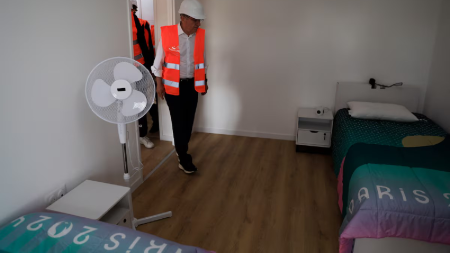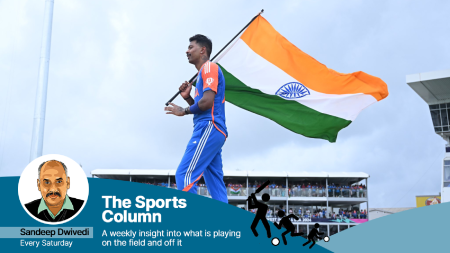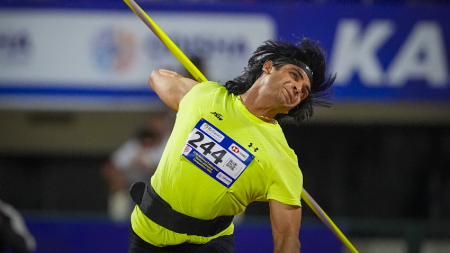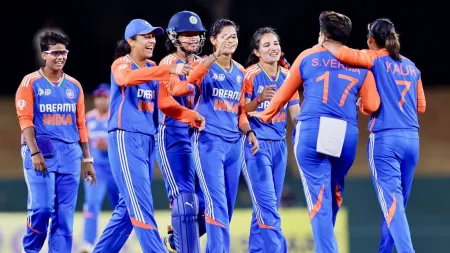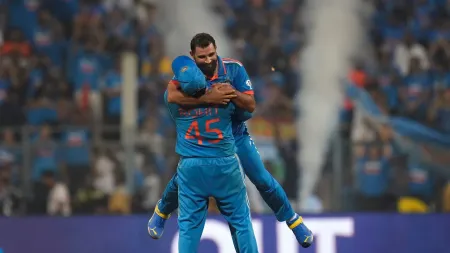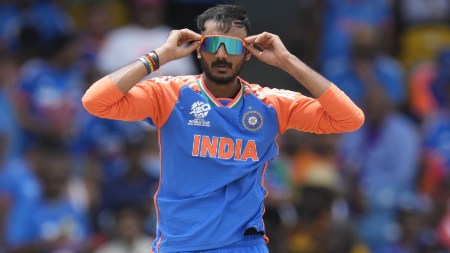Indian hockey players and fans alike will be looking skyward for their Paris Olympics hopes, for more than one reason.
For starters, the stars must align if India are to repeat or better their famous bronze from Tokyo, in what is going to be a tough campaign from the word go. But more relevantly, going aerial with their passing has been a rather common sight in India’s gameplay in the months leading up to the Games. And in their quest to return to the podium, it is an art India’s skilled technicians have been trying to perfect.

India have a few who can throw a mean aerial, but the bulk of those will be shared between current captain Harmanpreet Singh, former captain Manpreet Singh and star midfielder Hardik Singh – three of the best practitioners of passing the ball on and above a hockey field.
Think of the FIH Pro League match in Rourkela on February 21. India trailed the Netherlands 0-1 after conceding an early goal. In the third quarter, with around 8 minutes to go, the hosts were pinned to the right flank, looking for an opening as the Dutch stayed tight on defence. Harmanpreet went forward with a ground pass, but it came back to him because there was no space to be found.
 Hardik Singh in action at the FIH Pro League against Great Britain as India lost 1-3 (Photo: Hockey India)
Hardik Singh in action at the FIH Pro League against Great Britain as India lost 1-3 (Photo: Hockey India)
As this was unfolding, Hardik was slowly meandering from the center of the pitch to the right touchline – scanning the other side of the pitch ever so subtly – offering Harmanpreet another passing option.
The moment he received the ball, Hardik faked making a short pass back into the midfield, quickly changed his body position and sent a stunning aerial ball into the Netherlands circle. Because, as he was weighing up his options, Hardik had spotted Lalit Upadhyay willing to make a run and the midfielder trusted his gut to open up the play.
Lalit came up with a gorgeous piece of skill to leap in the air, control the ball and force an infringement from the Dutch defender to win a penalty corner. That it was Hardik who eventually converted the play from close range to make it 1-1 was a fitting full circle.
The new trend
India might not be the only team to use this tactic frequently in Paris. It’s an increasingly frequent sighting in the men’s game especially.
“I think Belgium was the first to tactically use it from 2018, and now a lot more teams have practiced and seen the benefits of it,” India head coach Craig Fulton told The Indian Express in Bengaluru. “There are a lot more aerial passes being played now, I’d say at least a third of the passes in the final third. The skill level has improved, so teams can do it on the move. It’s not just a dead ball. And it’s very high-risk-high-reward.”
 Hardik’s importance to the team hit home not during one of his many tireless performances. (Hockey India)
Hardik’s importance to the team hit home not during one of his many tireless performances. (Hockey India)
Hardik, of course, is one of the best exponents of it in the world. “For me, almost every training session I practice my aerials and it has become a part of my natural game. I just think that if I am able to hit 20 really good aerial balls in a session, then it becomes easier for me to hit 2-3 good ones during a match,” the Indian vice captain told this daily at SAI Bengaluru before the team left for Europe.
“There are some sessions when we work as a team on structures and strategies, and if my aerials work well in those, then it’s OK. But if not, I work on it more on my own time. I come 30 minutes early to the training, finish warmup and just throw some aerials. I do this quite a lot. I want to hit, say, 30-40 really good aerials in a week of training.”
But it is not lost on Hardik that quality matters more than quantity. So he forces himself to play these long balls with the same body language, and mindset as he would do in a match. Behind it is a simple motivation. “For me, it’s a self confidence thing, I *have* to do extra work on this, because in my mind I have to feel like I have done more work than the opposition, and that I am better at it than them,” Hardik added.
Need for space
Siddharth Pandey, a FIH Level 3 Coach, says the objective of an aerial pass is to eliminate opponents, break defensive lines, to break the press.
With teams pressing fast, marking the opponents closely and closing down the hotlines — the fastest route to goal — the space has shrunk to play a ground pass. The other option then is to play an overhead pass to beat these tactics. And that’s where the likes of Hardik, Harmanpreet, Manpreet have a key role to play.
 India’s Hardik Singh celebrates after scoring a goal against Malaysia during the Asian Champions Trophy 2023 hockey match between India and Malaysia, at Mayor Radhakrishnan Hockey Stadium, in Chennai. (PTI)
India’s Hardik Singh celebrates after scoring a goal against Malaysia during the Asian Champions Trophy 2023 hockey match between India and Malaysia, at Mayor Radhakrishnan Hockey Stadium, in Chennai. (PTI)
“Hardik is clinical with his aerials, especially the 35-40m range,” Pandey explained. “Apart from good peripheral and open vision, it has a lot to do with torso rotation strength. If you see Hardik, he doesn’t possess the broadest shoulders in the world, but he has incredible core strength, possibly second to none. You see his Instagram stories, you see him very often in a plank position with plates on his back. It also helps with his injection, he is India’s No 1 for PC routines. He plays with a stick that is known as the low-bow stick. Basically, the bend on the stick (bow) is quite low and it helps with 3D skills, close control, and is very useful for aerial passing.”
Interpretation issues
But a key aspect of this tactical play is interpretation of the rules, with defending teams penalised for encroaching an attacker while receiving the aerial pass.
“The rule changes recently have made it a little more advantageous for attacking sides, every team is trying to use that. We have to change our structure based on the aerial strategies,” Hardik said.
Fulton actually sees it as a source of frustration, if the referees are not adjudicating it properly. He recalled the match against Great Britain in London last month when a penalty stroke was given against India for a defensive infringement inside the circle.
“And the exact same thing happened in the second half, just outside the D and that was their ball. You’re hoping that the best umpires and video referrals will be on at the Olympics. I’m really hoping that we have the same standard of interpretation,” the South African said.
Fulton hoped for high standards and fewer inconsistency at the Olympics. He’ll expect from his players, who’ll aim for the sky, literally.
Disclaimer: The copyright of this article belongs to the original author. Reposting this article is solely for the purpose of information dissemination and does not constitute any investment advice. If there is any infringement, please contact us immediately. We will make corrections or deletions as necessary. Thank you.
